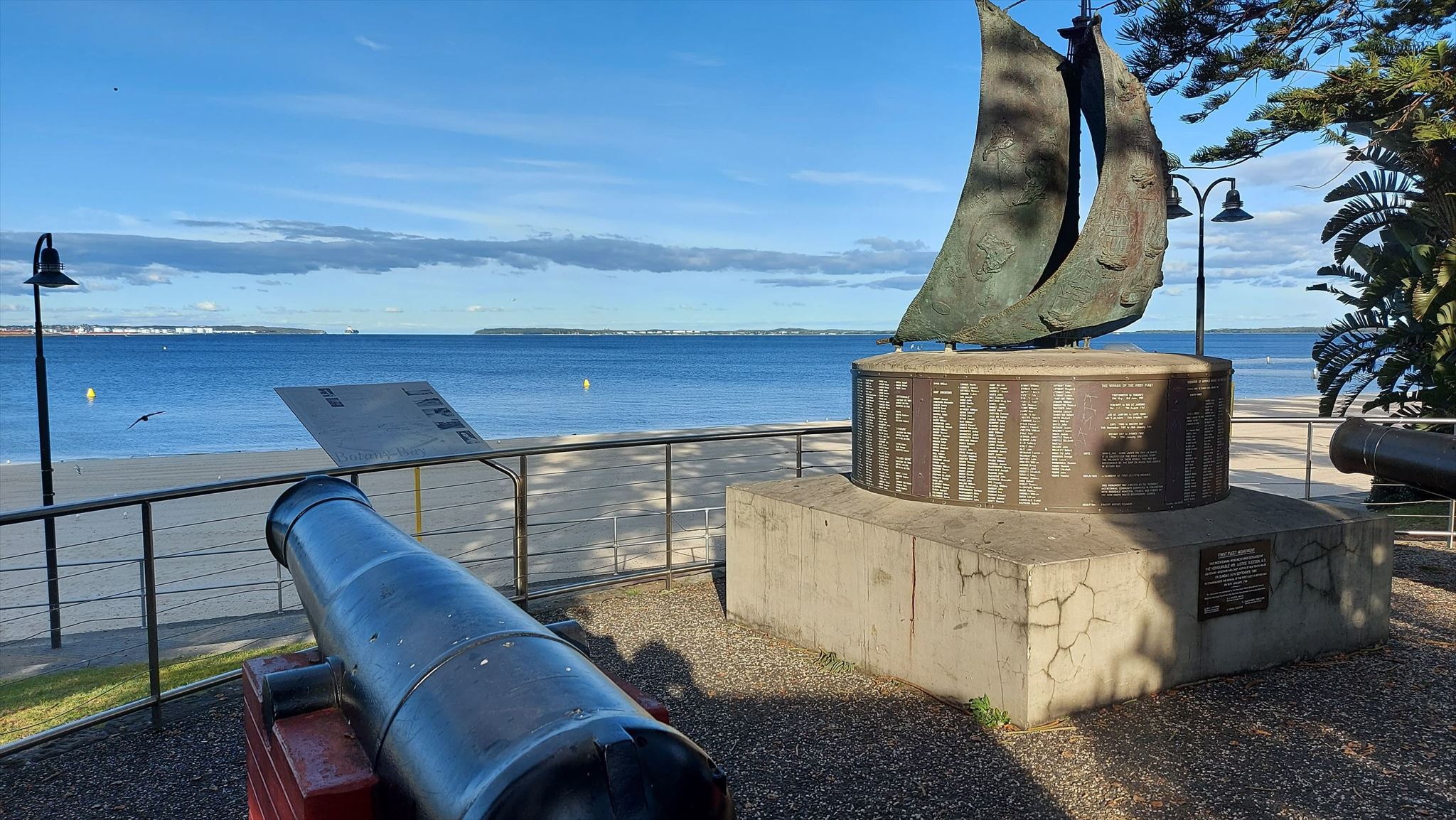THE FIRST LANDING
We acknowledge the Gadigal people of the Eora Nation as the Traditional Owners and Custodians of the land.
On May 13th, 1787, a group of over 1,400 people set sail from Portsmouth, England, under the command of Captain Arthur Phillip. This convoy of ships were sailing to the Great Southern Land to begin a new colony of European settlers in the southern hemisphere. They briefly docked in the Canary Islands off the coast of Africa, then sailed across the Atlantic Ocean to Rio de Janeiro, Brazil, where they took on huge stores of supplies. Then the fleet sailed back across the Atlantic to Cape Town, South Africa, where they took on even more food, including livestock. The main portion of the journey was across the entire Indian Ocean, from Cape Town to Botany Bay. They had travelled about 24,000 kilometers (15,000 miles) throughout the entire journey.
Their destination was a vaguely described bay in the continent of Terra Australis (Australia), newly discovered to Europeans. In a stunning feat of planning and navigation, nearly all of the voyagers survived. Travelling on the Supply, Governor Phillip arrived in Botany Bay on 18th January 1788, closely followed by the rest of the Fleet which arrived over the next two days.
A wide variety of people made up the First Fleet. Military and government officials, along with their wives and children, led the group. Sailors, cooks, masons, and other workers hoped to establish new lives in the new colony. Perhaps most famously, the First Fleet included more than 700 convicts. The settlement at Botany Bay was intended to be a penal colony. The convicts of the First Fleet included both men and women. Most were British, but a few were American, French, and even African. Their crimes ranged from theft to assault. Most convicts were sentenced to seven years’ “transportation” (the term for the sending of prisoners to a usually far-off penal colony).
Some years earlier in 1770, Lieutenant James Cook had landed on the southern side of Botany Bay at Kurnell. Cook and some of his crew ventured over to the north western side of Botany Bay to explore where you are now standing. Unfortunately, Botany Bay did not live up to the glowing account provided by the explorer James Cook and was not suitable for the establishment of a colony. The bay was open and unprotected, the water was too shallow to allow the ships to anchor close to the shore, and fresh water was scarce. The poor quality and the dampness of the soil also made it an unhealthy place for a settlement.
The First Fleeters spent a few days along the shores of Botany Bay, before Captain Phillip determined another site for the colony. While on board they caught glimpses of their new homeland and its local inhabitants. The Gadigal people of the Botany Bay area witnessed the arrival of the Europeans to their land. To the Aboriginal peoples looking on, the arrival of the ships marked the beginning of an experience that would change their lives.
On 22nd January Governor Phillip sailed north to Port Jackson with a small expedition party. There he selected a sheltered site for anchorage which he named Sydney Cove. Returning with the remainder of the Fleet on 26th January 1788 - now celebrated as Australia Day - the first permanent European colony on the Australian continent was established. This settlement has since developed into the city of Sydney.
This brass monument to commemorate The First Landing was erected by Rockdale Council (now Bayside Council) Bicentennial Committee as part of the Bicentennial Celebrations of New South Wales in 1988. There were festivities and celebrations held along the shores of Botany Bay in Brighton-Le-Sands around the 18th to 20th January in 1988.

In order to claim this virtual, you must complete three tasks.
1. Take a photo of yourself, GPS device or something that identifies you at GZ with the monument and Botany Bay in the background. This photo is to be attached to your log.
2. Around the base of the monument are the names of the "First Fleeters" and the ships that were part of the First Fleet Landing. Find the ship named "LADY PENRHYN". What is the name (first name & surname) at the bottom of the first column under this ship's name? Message me the name. Do not include this name in your log.
3. How many ships are shown on the main monument sail that is closest to road. Message me the number. Do not include this number in your log.
You are welcome to log your find before you send the required information to me, but please send the information to me within a week of logging. Logs which do not meet the photo requirements, or where the required information has not been sent, will unfortunately be deleted. Armchair logging is not acceptable.
I hope you enjoy visting this interesting location. Try to imagine what the First Fleeters saw when they landed across the bay at Kurnell in 1788!
NB: Parking can be difficult close to GZ along The Grand Pde during daytime hours. Do not park between 3:00PM to 7:00PM (Mon - Fri) or your car will get towed away! It is best to park near the given WP to the north of GZ.
Virtual Rewards 3.0 - 2022-2023
This Virtual Cache is part of a limited release of Virtuals created between March 1, 2022 and March 1, 2023. Only 4,000 cache owners were given the opportunity to hide a Virtual Cache. Learn more about Virtual Rewards 3.0 on the Geocaching Blog.
CONGRATULATIONS: 4-way FTF goes to Jackscruff, GeoMonty, EverestHigh & MaxAdventurer.
 |
|
Did you know that NSW has a geocaching association? Geocaching NSW aims to enhance and improve the activity of geocaching and holds regular events where geocachers meet to enjoy their common interests. Visit the association website here. |